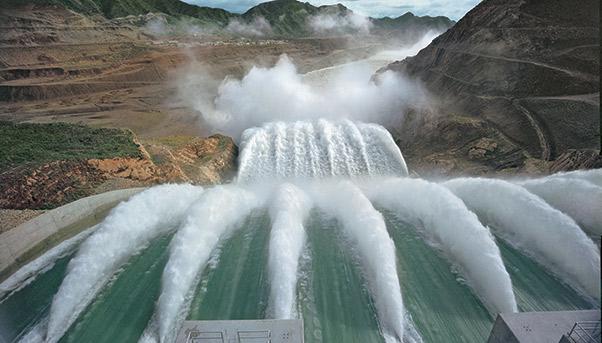Pakistan’s Tarbela is not only one of the world’s largest earth- and rock-filled dams but also a legacy of a treaty with India that the country has respected for more than half a century despite the conflicts it has had with its neighbour.
Located on the Indus River some 130 kilometres northwest of Islamabad, the dam serves three functions: produce electricity, control floods and contribute to irrigation.
A massive structure whose crest length is nearly three kilometres long, it has come to be responsible for 16% of Pakistan’s electricity, according to the World Bank. Its installed capacity is 3,478 megawatts (MW), while the reservoir from which its turbines draw water stretches for 81 kilometres with a storage capacity of 14.3 billion cubic metres.
Completed in 1976, the Tarbela was part of the Indus Basin Project, which also oversaw the construction of another dam called Mangla on the Jhelum River. Neither Mangla nor Tarbela would have been possible if it were not for the Indus Water Treaty, which the World Bank helped broker between the Pakistan and India in 1960.
The treaty brought to an end a dispute over water between the two countries by assigning three so-called eastern rivers – the Ravi, Beas and Sutlej – to India and three so-called western rivers – the Indus, Jhelum and Chenab – to Pakistan. Many of these rivers had been a source of tension because they flow through both countries, complicating the rights of use.
With its control over the Indus, Jhelum and Chenab assured, Pakistan soon began preparing projects to harness their powers to help with the development of the economy.

«(The treaty) provided construction of replacement works called Indus Basin Project (IBP) to compensate for perpetual loss of Eastern river’s water,» explains the Pakistan Water & Power Development Authority’s (WAPDA) website. «The works proposed under the Treaty included two multipurpose dams from one of which is Tarbela Dam on Indus river.»
Construction of the dam, which began in 1968, was a massive undertaking. Impregilo, a Salini Impregilo predecessor that led the consortium assigned the task, had never done anything of the sort. The project, which included a system of dams, a powerhouse and the accompanying network of tunnels, was five times the size of the largest construction sites it had managed. The total number of workers that were eventually to take part in the project was equally daunting: as many as 45,000 from 26 countries.
The decades since Tarbela’s completion would see Pakistan expand its facilities in incremental steps to keep up with the growing demand for electricity. The latest, formally known as the Tarbela Fourth Extension Hydropower Project, aims to add 1,410 MW of generating capacity by 2018. It consists of the construction of a power house, the modification of a tunnel and the installation of three 470 MW power units on an existing dam.
«The hydropower project will shift Pakistan’s power mix away from expensive imported fuel oil needed to run thermal plants, to cleaner, more environmentally friendly sources of power,» according to the World Bank, which is providing part of the funding.
The project is also designed to reduce the number of power outages suffered across the country, an affliction that disrupts people’s lives – let alone the economy.

